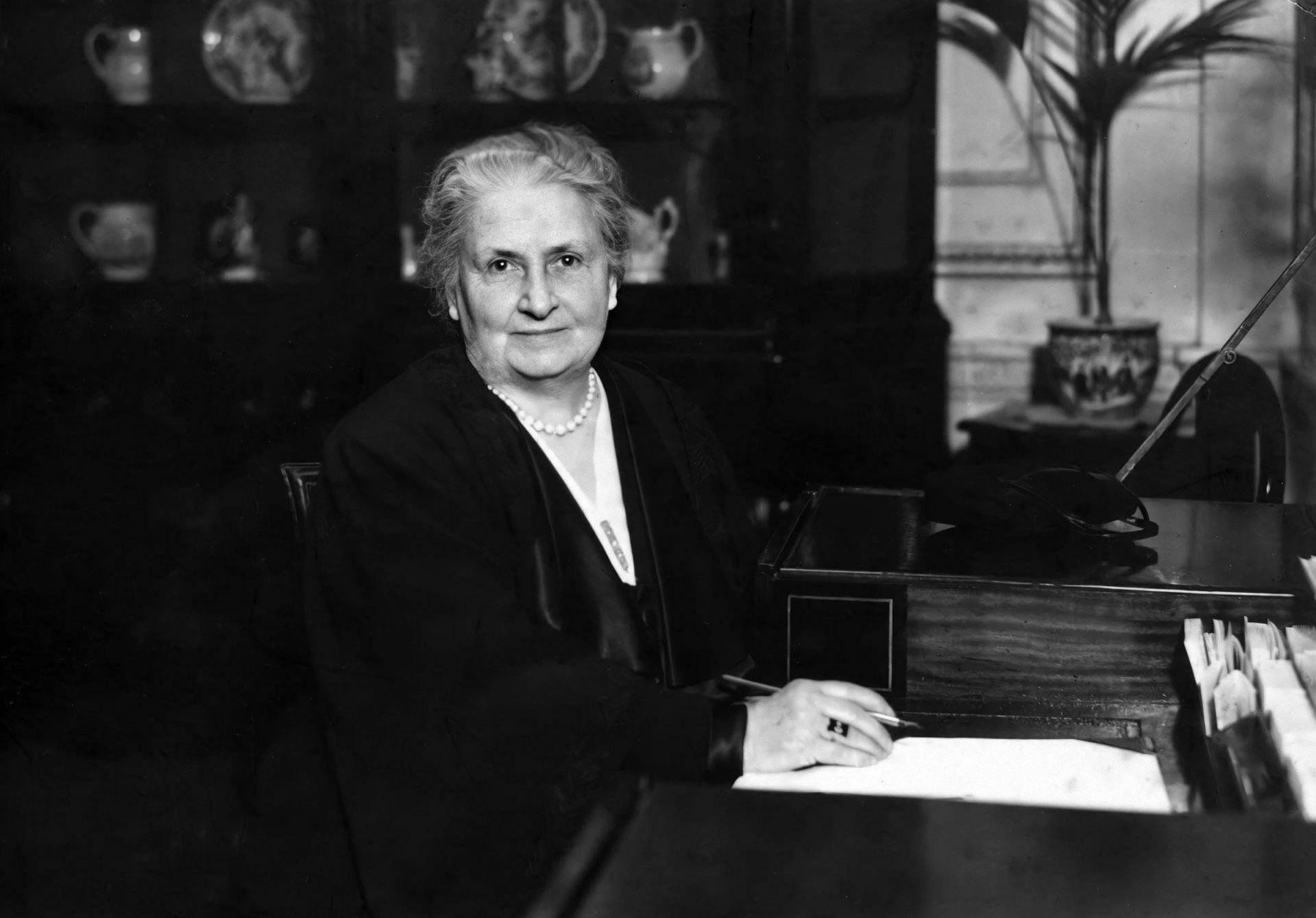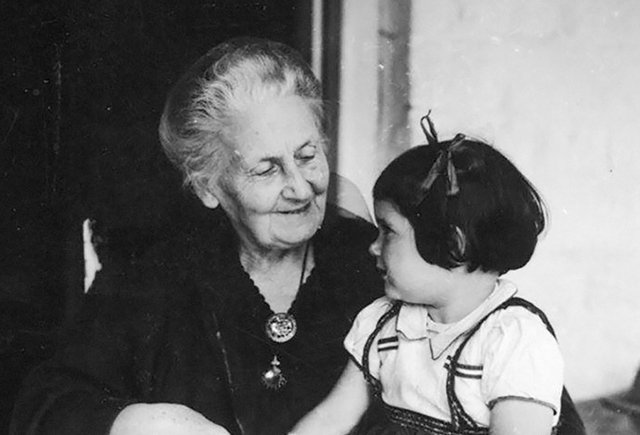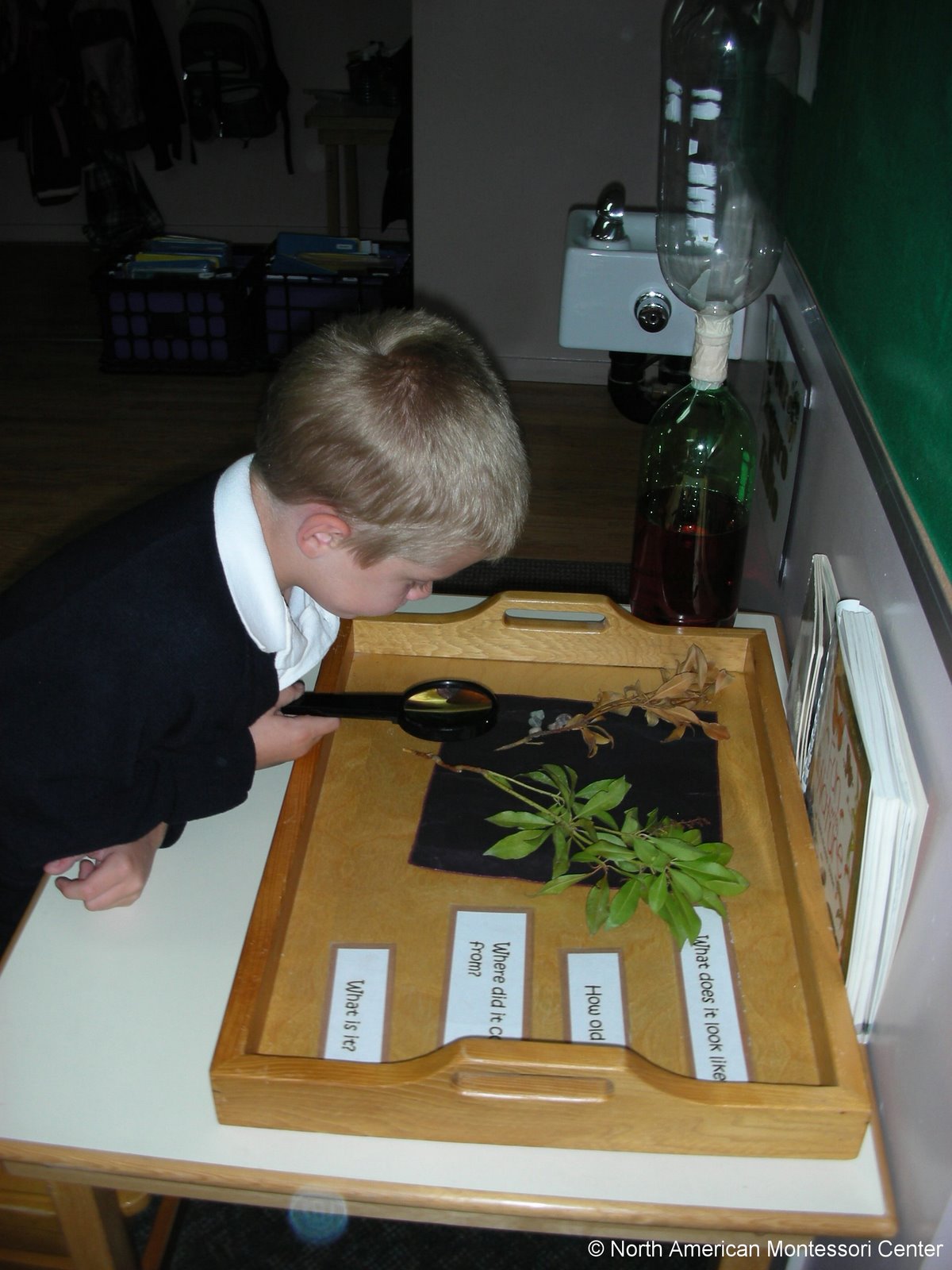What is Montessori?
Montessori is an approach to the education of children. It is a way of looking at, and understanding, children. It is a view of how children develop and learn, which has been translated into a systematic method of education based upon careful scientific study. The Montessori educational system is unique in that it has successfully undergone continued development for over one hundred years, and has been used effectively with children with all levels and abilities, include diverse and additional needs, in different countries around the world. Perhaps the most significant reason for its success is that it is a comprehensive method of education, resulting from an integration of research on development, learning, curriculum, and teaching

What is the idea behind the Montessori approach to the education of children?
Montessori is an approach to education based upon the principle that schooling should work with the nature of the child, instead of against it. Therefore, education should be based upon scientific study of the child and a resulting understanding of the processes of development and learning.
What is the Montessori understanding of the nature of the child?
Dr. Montessori felt that her greatest discovery was that children like to work as well as play. In fact, children have a natural drive to work in order to develop. The child’s great task is to create an adult. As a result, children are not content unless they have an opportunity to develop and learn.
How does Montessori’s understanding of the child influence her view of education?
Since Montessori schools are based upon the principle that “…the child, not the teacher, is the constructor of man, and so of society…”, it is felt that the, “human teacher can only help the great work that is being done…”. “Education is not what the teacher gives; education is a natural process spontaneously carried out by the human individual, and is acquired not by listening to words, but by experiences upon the environment”. Therefore, the teacher’s job is to provide the materials and environment which will aid development, and to be ready to respond when help is needed.
What is Dr. Montessori’s view of education?
Dr. Montessori felt that education should no longer consist only of imparting knowledge, but must instead take a new path seeking the release of human potentialities. However, it must not be forgotten that, “If education is to be an aid to civilization, it cannot be carried out by emptying the schools of knowledge, of character, of discipline, of social harmony, and above all, of freedom.”
Principles of Montessori Education
There are several Montessori principles that must be implemented for a Montessori program to be considered authentic. Essential Montessori principles include: respect for the child, sensitive periods, the absorbent mind, and the prepared environment. In addition, a full complement of Montessori material, and a dedicated Montessori work cycle are especially important for a successful Montessori program. The key attributes of a Montessori program are explained below

1. Respect for the child
Respect for the child is the cornerstone on which all other Montessori principles rest. Maria Montessori believed that all children should be treated with respect: “Children are human beings to whom respect is due, superior to use by reason of their innocence and the greater possibilities of their future.” Therefore, respect is incorporated into every aspect of the Montessori learning environment. Teachers show respect for children by providing them with the opportunity to do, think, and learn for themselves. Through freedom of choice, children are able to develop the skills and abilities needed to become confident learners. As a result, Montessori children are independent, and are respectful of their environment and others.

2. The Sensitive Periods
Maria Montessori believed that children pass through specific stages in their development when they are most willing and able to learn specific skills and knowledge. She referred to these blocks of time as ‘sensitive periods.’ These periods can be identified through a change in behavior, such as intense interest or repetition of an activity. To support children’s sensitive periods for learning, the Montessori program incorporates a three-hour work cycle. During this time, children have the opportunity to work on activities without interruptions. As a result, children follow their natural interests, and progress naturally. In the Montessori classroom, the role of the teacher is to be a skilled observer of sensitive periods. Based on these observations, the Montessori teacher guides children towards activities and materials that are suited to their stage of development. In effect, this supportive creates the optimal environment for learning.
3. The Absorbent Mind
Montessori believed that the first six years of life are crucial to the development of the child. In her research, Montessori refers to this period of development as the ‘absorbent mind,’ which describes the period of time when the child’s mind readily absorbs information from the world around them. The first phase of the absorbent mind occurs from birth to age three, and is known as the period of ‘unconscious creation.’ During this time, children learn to walk, talk and develop their sense of self through experiences with their environment. From the ages of three to six, children move into the second phase of development, known as the ‘conscious absorbent mind.’ Most significant about this period, is that children begin to actively seek out experiences that will help them to develop their intelligence, coordination, and independence.
4. Mixed Age Groupings
In Montessori, it is common for students to be grouped with children within a three-year age range. This structure to the Montessori environment encourages older children to take on leadership roles, and for younger children to learn through imitation. In addition, mixed age classes teach children how to engage socially with both younger and older children. In effect, mixed age class groups lead to imitative learning, peer tutoring, and mixed-age team work.

5. The Prepared Environment
Doctor Maria Montessori conducted extensive research into children and their development throughout her lifetime. She determined that children learn best in a prepared environment where they have freedom of movement and independent choice. Consequently, Montessori prepared environments are child-centred learning spaces that makes the educational experience available in an orderly format. Montessori materials are displayed in progression order from left to right within their specific curriculum area. The goal of the Montessori classroom is to create a harmonious learning space that encourages independent learning. Elements of a prepared environment include: freedom, structure, order, beauty, nature and the integration of the social and intellectual aspects of child development.
6. The Curriculum Areas
The Montessori curriculum is divided into five key areas of learning, including: practical life, sensorial, mathematics, language and culture. The curriculum emphasises that learning is a developmental process that cannot be determined by a child’s age. As a result, the learning process is instead viewed as a process that is determined by the rate and speed that a child can acquire one skills or knowledge area before they progress to the next. Find out more about the Montessori Curriculum.

7. The Montessori Materials
Montessori materials are sensory based learning tools that are designed to teach children through hands-on experience. Especially relevant, is that each material is designed with an inbuilt control of error. In effect, this unique design allows children to discover the outcome of the learning material independent of an adult. Due to the self-correcting aspect of the materials, children are encouraged to organize their thinking. In addition, they learn to problem solve in a clear way, and absorb the outcome of the material, under the careful guidance of their teachers
8. The Role of the Teacher
Montessori teachers are not the center of attention in the classroom. Rather, their role centers on the preparation of learning materials to meet the needs and interests of the children in their class. Essentially, the focus is on children learning, not on teachers teaching. Montessori believed that the teacher should focus on the child as a person, rather than on the daily lesson plan. Although the Montessori teacher plans daily lessons for each child, they must be alert to changes in the child’s interest, progress, mood, and behavior. Maria Montessori believed: “It is necessary for the teacher to guide the child without letting him feel her presence too much, so that she may be always ready to supply the desired help, but may never be the obstacle between the child and his experience.”

WHAT IS THE ABSORBENT MIND & SENSITIVE PERIODS?
When a child is born, they are born with nothing. No memory, no framework for understanding or processing their environment. Language and motor skills are not programmed into them, unlike other mammals who are able to walk shortly after birth, babies must first learn to roll over, sit up, crawl, and scoot before they begin to walk. They don’t know how to pick up a chair, count the number of people at the table, or how to respond appropriately to another’s sadness. The child must, literally, learn everything.

What is a Sensitive Period?
The sensitive periods is the pattern the phenomenon of the absorbent mind follows. The joy in
which the child has in these sensitive periods is his internal motivation to learn and development.
A sensitive period is a block of time in the child’s life when they are absorbed with one
characteristic of their environment to the exclusion of all others. Once a sensitive period has
passed, it will never return in the same way. The child is still able to learn the skill, but with greater
difficulty.
Key Identifiers of a Sensitive Period:
The child shows intense interest in an activity or skill.
The child will easily repeat the task over and over without tiring.
The child finds much joy and pleasure in the task.
The child is able to willingly focus their attention on the task.
The child will possess unequaled energy and intense effort toward the task.
What to do when you notice a sensitive period
Sensitive periods are “the pattern the child follows in gaining knowledge of his environment”
1. Order. The child has an innate desire for order and consistency. Unlike our desire for order and
everything in its place, a child’s desire for order is better characterized as the child’s desire to
understand the relationship between objects.
How might a child show this sensitivity? By showing pleasure in having things in their
correct place, putting things back when they’re not, and/or throwing a fit when he or she is
not able to.
What to do? Allow the child to assist in daily tasks they see you doing, keep things simple,
follow routines, prepare an environment the child can interact with safely.
2. Mouth & Hands. “Through taste and touch, the child absorbs the qualities of the objects in his
environment and seeks to act upon them” (Lillard, 34). The neurological structures for language
are developed through sensory and motor activity. It is during this sensitive period the child must
be exposed to language. How might a child show this sensitivity? Putting everything in the mouth,
trying to touch anything and everything, likely objects the child has been kept away from or told not
to touch.Mbr
3. Walking. Montessori likened this period to a second birth. The child is now able to move around
independently, no longer having to be carried and set about.
How might a child show this sensitivity? Attempting to get out of (or refusing to go in)
cribs/playpens, walkers, strollers, or high chairs. Pulling up on furniture or using furniture or walls to
steady themselves as they walk.
What to do? Allow the child the room and opportunity to walk. Take a walk for the sake of walking,
not with the purpose of getting there. Stroll through the park, take a nature walk at the child’s pace,
take down baby gates and put away the playpens. Let the child walk! Remember, children are not
a hindrance to our life. They aren’t inconvenient creatures who impede our living, they are full bodied humans on a quest to know and discover and live to their full potential! Yes, living without
“baby jails” (as we call them in our house) can be inconvenient causing more mess and interaction
on our part, but it is a chance to not only give our child more freedom but to expose and identify
our own prejudices to childhood and push us to grow as parents
4. Tiny Objects. Here the child possesses an intense interest in small, tiny objects—crumbs on the floor, threads on the couch, rocks, the beads on a necklace, etc. The child is attempting to understand, How does it all fit together? What role does it play in the whole? What’s the object’s purpose? It’s a grand adventure. This is also, usually, the stage the beginnings of the pincer grasp emerge and other fine motor skills. How might a child show this sensitivity? Stopping to pick up or play with tiny objects, perhaps things you don’t see or find insignificant. Carrying these things around, upset when they lose their tiny object, transferring them from one place to another and back again. What to do? Allow them the freedom to carry around and play/work with their tiny objects. Harmless things like leaves or strings, even rocks, let them explore. If they’re in a stage where things go to their mouth rather than stay in their hands, observe closely. Children put things n their mouth because it’s a sensory way to explore the object—what does it feel like on their tongue? What about when wet? How can I manipulate/change the object? Essentially, the child is asking, “What does this little thing do and what can I do to it?”
5. Social Life. In this period, the child is understanding the relationship between people, self, and personal rights. The child is initially concerned only for himself, but this grows to include others as well. Development and eventual understanding of manners and how behaviors affect others begin here. We also call this grace and courtesy.
What is Motor Skills?

A motor skill is simply an action that involves your baby using his muscles. Gross motor skills are larger movements your baby makes with his arms, legs, feet, or his entire body. So crawling, running, and jumping are gross motor skills. Fine motor skills are smaller actions. When your baby picks things up between his finger and thumb, or wriggles his toes in the sand, he’s using his fine motor skills. But it’s not just about fingers and toes. When your baby uses his lips and tongue to taste and feel objects he’s using fine motor skills, too.
When your baby is newborn, his brain is not mature enough to control skilled movement. Development starts at his head, and then moves down his body. So your newborn baby can control his mouth, face, lips, and tongue, with the rest following in time. Acquiring motor skills is also a part of a child’s development. Mastering both fine and gross motor skills are important for a child’s growth and independence. Having good motor control helps a child explore the world around them and also helps with their cognitive development.
DEVELOPMENT OF MOTOR SKILLS:
The child’s motor skills are developed in two places: at home and at school.
AT HOME:
You can encourage your baby’s development by playing games that challenge him a little.
When he can sit well unsupported, put his favorite toy just out of reach. This will mean he
must balance as he makes a grab for his toy. Watch for any changes in how he uses his
legs, arms and fingers.
When your baby gets the hang of a game, find another toy or activity that practices new
skills. You could try letting him pick up peas, poke his finger in play dough, or pass a toy
from hand to hand. Try not to make things too difficult for him. Any change you make
should encourage him to have a go at doing something just a little more difficult, not give
up trying. Your baby will find that developing his skills is more fun when he has a frequent
change of position and activity. Small challenges, made often, are best for your baby’s
development.
AT SCHOOL:
Dr. Maria Montessori, firmly believe that from birth a child can move and develop its
physical movements independently. She advocated encouraging independence and
awareness by providing child size furnishings for even the very young. Dr.Maria
Montessori recommends that an adult can help the child to learn orderly movements so
that as they grow older, they gain more control over their bodies. Montessori lessons are
themselves, a guide to movement.
There are ample of Montessori activities to develop the child’s motor skills: carrying the
mat, rolling the mat, unrolling the mat, arranging a work on the mat, returning the work to
the shelf are some of the activities which can fine tune the motor skills of the child.
Children at this age (26) learn these tasks easily and take pride in their ability to do so
independently. They perform them over and over with a sense of accomplishment.
How to build gross motor skills?
Gross motor skills involve using the large muscles of the body to perform everyday
activities such as walking, running, and jumping. They are also important for sporting and
playground skills such as climbing, catching and throwing a ball.
How do you know if your children are reaching important gross motor milestones? Children
who have problems with gross motor skills are likely to:
Achieve sitting, crawling, and walking much later than average
Move stiffly
Avoid physical activities
Get tired frequently
Have trouble maintaining an upright position when sitting on a tabletop or mat
At an older age, have problems following instructions during physical tasks (e.g.
stepping forward before throwing, maneuvering through obstacle courses)
Weak gross motor skills can get in the way of having fun. Children who lack gross motor
skills also often lack fine motor skills that are necessary for formal school work and day-today tasks, so ignoring this problem can lead to other problems that affect every area o
your children’s lives.
You can help children build strong gross motor skills by practicing these fun activities at
home.

